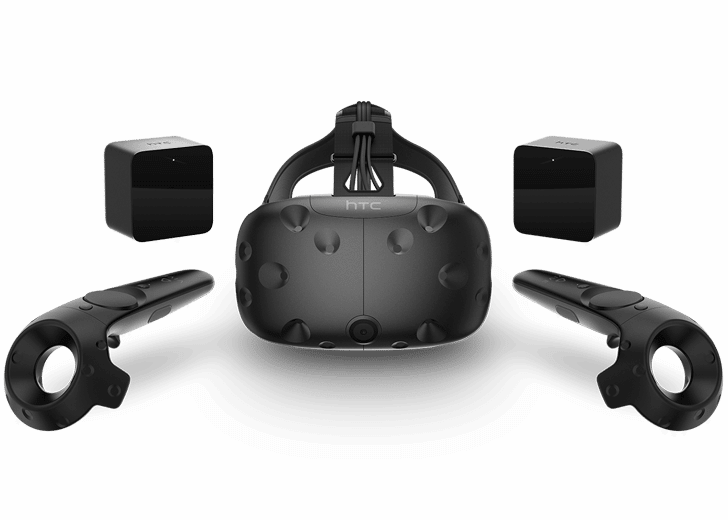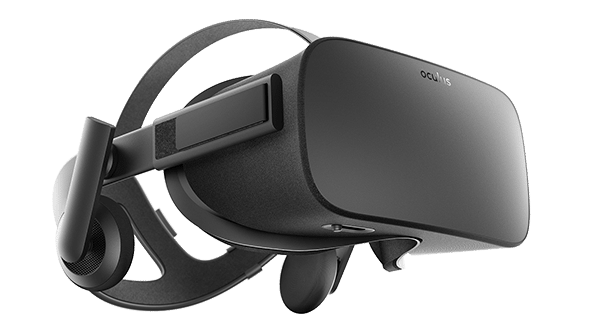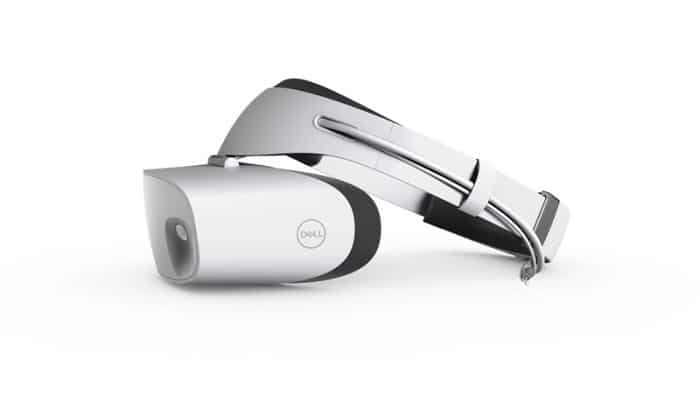Top 6 VR Glasses for PC
Virtual Reality was once the technology of the future. Within the last few years, however, the technology has exploded in popularity and become better and better. Choosing which device to purchase can be a confusing and difficult process.
Check out the reviews below to find out which VR headsets will provide the ultimate gaming experience for users. With technology improving, the specs on these devices are fairly similar. Therefore, it is important to look at what features make the headset the right choice for you. Links to the product developer pages are included for those readers who want additional information like recommended computer requirements.
1. HTC Vive
Device Specs:
- Resolution: 2160X1200 (1080X1200 per eye);
- Refresh Rate: 90 Hz;
- Tracking: 15X15 feet;
- FOV: 110 degrees;
- Controller: 2x Vive Baton Controller, Steam Controller, or Any PC-enabled controller.
The biggest selling point for this device is that the HTC Vive was made in partnership with Valve and is compatible with Steam. Users can also sign up for the VIVEPORT subscription service. At only $6.99 a month, users get access to ample VR content. It is made with 70 sensors and 360-degree head tracking. The refresh rate is high and should help reduce the instances of motion sickness.
This device features Lighthouse room tracking that allows a user to move around with the headset on after putting up only a few sensors around the room. The HTC Vive also features new Tracker tech that allows a user to bring any object into the realm of virtual reality. HTC also sells an add-on, called TPCast, for wireless use.
2. Oculus Rift
Device Specs:
- Resolution: 2160X1200 (1080X1200 per eye);
- Refresh Rate: 90 Hz;
- Tracking: 5X11 feet;
- FOV: 360 degrees;
- Controller: Xbox One pad or Oculus Touch.
The Oculus Rift is the only, yet equally as good, brother of the HTC Vive. Their specs are almost identical, but there are some aesthetic differences that could make one more appealing than the other. The Oculus Touch controllers are sleeker than those provided with the HTC Vive.
Further, the Oculus Rift is made for a smaller face frame and can fit more snuggly than the HTC Vive. Initially, most games compatible with the Oculus Rift supposed the user would be chair-bound. However, with the development of an additional sensor available for the Oculus Touch controller, users can now experience roomscale tracking.
3. Acer MR Headset
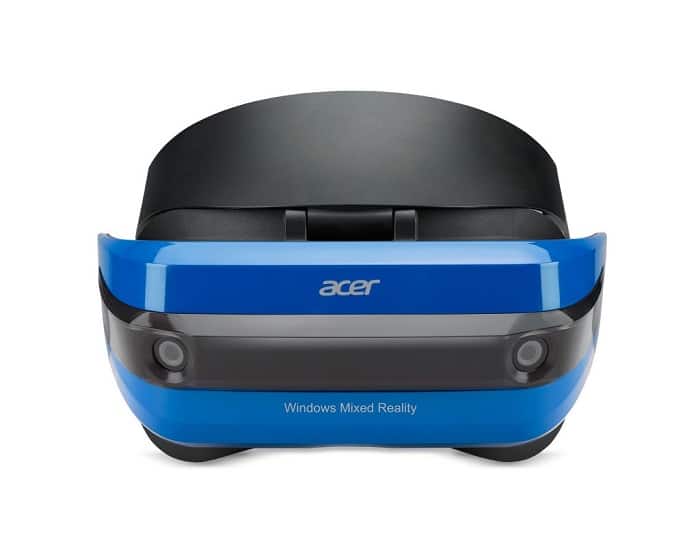
Device Specs:
- Resolution: 2880X1440 (1440X1440 per eye);
- Refresh Rate: 90 Hz;
- Tracking: Inside-out;
- FOV: 100 degrees;
- Controller: Included.
The Acer MR Headset is packed with creature comforts. It is designed with a flip visor that allows users to reengage with the real world during interruptions without having to completely remove the headset each time. With Acer’s inside-out tracking technology and six degrees of freedom of movement, users can move around the virtual world effortlessly and without the use of cumbersome external sensors. The headset also features a double-padded headband for a snug and comfortable fit. Additionally, the device comes with 20,000 compatible Windows apps.
4. Sulon Q
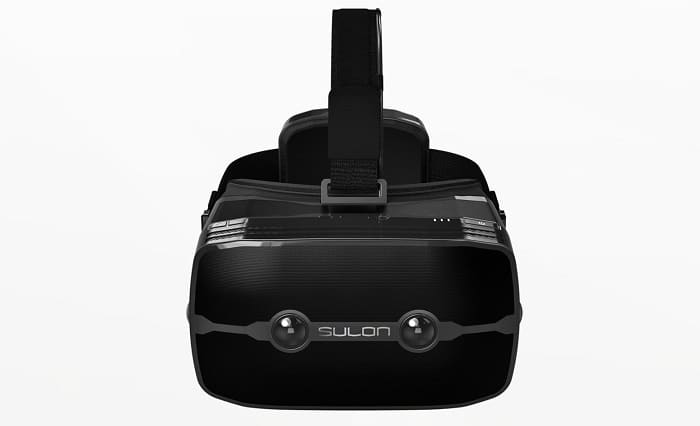
Device Specs:
- Resolution: 2560X1440 (1289X1440 per eye);
- Memory: 8GB;
- Audio: 3D Spatial Audio with Noise Canceling Microphones;
- FOV: 110 degrees;
- Controller: Wireless Keyboard and Mouse Included, Any Windows 10-compatible Controller or Joystick.
This device is powered by AMD LiquidVR and ships with a full Windows 10 PC inside the headset. The internal hardware means users can experience virtual reality wire-free. Sulon Q provides both augmented and virtual reality experiences. With its spatial redirection and processing technology, this device allows users to go on endless virtual walks safely and without the need for external tracking systems or sensors.
5. Dell Visor
Device Specs:
- Resolution: 2880X1440 (1440X1440 per eye);
- Refresh Rate: 90 Hz;
- Tracking: Inside-out;
- FOV: 110 degrees;
- Controller: Included.
Dell’s VR headset comes in a sleek, white design that includes a flip-up visor to switch effortlessly between the virtual and real world. Users who wear glasses may prefer this device because it includes an adjustable headband and detachable face sponge for comfort. Unlike some of the other wireless options, the Dell Visor does require USB and HDMI hookups.
The device features a cable management clip that helps cut down on tripping over wires. Similarly to the Acer headset, this device uses inside-out tracking technology to eliminate the need for external sensors. This can prove to be less accurate than the HTC Vive or Oculus Rift because movements need to be in view of the headset cameras in order to register.
6. HP WMR Headset
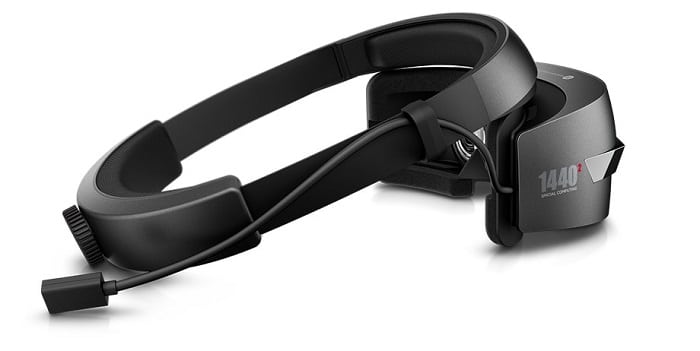
Device Specs:
- Resolution: 2880X1440 (1440X1440 per eye);
- Refresh Rate: 90 Hz;
- Display Size: 2.89 inches diagonal (x2);
- FOV: 95 degrees;
- Controller: Included.
The HP WMR Headset is easy to use and designed for optimum immersion. The device includes an integrated motion tracking system, a 2-in-1 HDMI and USB cable, and full software support. Users do not need to download additional software or set up any external sensors. With its lightweight, double-padded headband headset, this VR device is also very comfortable for long-term use and intense immersion.
Summing Up
Each year more and more companies are developing and marketing virtual reality headsets and systems. While the Oculus Rift and HTC Vive are industry giants, those devices are no longer the only options for PC-based virtual reality experiences.
Have you tried any of these VR headsets? Did we leave out your favorite VR device? Let us know! Leave a comment below to tell us about your favorite features and devices.
